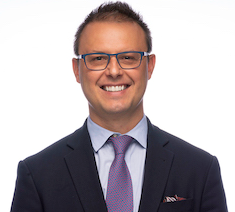A family medicine perspective on the COVID-19 pandemic
 We need better integration among sectors
We need better integration among sectors
A perspective from Dr David Ponka. David is a family physician in Ottawa, Canada, and the Director of the Besrour Centre for Global Family Medicine at the College of Family Physicians of Canada. He has three daughters who are now back to school after testing negative for COVID-19.
Français
My fear was realized: My daughters were sent home with runny noses a few days after the start of the school year. Our daycare and schools were following sound public health guidelines, but the fact that we had to line up on several days in a row at overwhelmed testing sites meant that I had to miss work so as to avoid the potential of further exposing my colleagues and patients if my children and I had COVID-19. This lack of coordination in testing was frustrating given that I have patients who have already been unable to see me since the spring due to the COVID-19 pandemic.
As we enter the second wave of the pandemic, we should not forget about the third and fourth waves. These waves of neglected chronic disease, and the growing burden of mental health and social suffering associated with them, in fact started months ago. My patients have long lists of complaints that they have not been able to address. If that list includes uncontrolled diabetes, for example, that only increases their risk of COVID-related morbidity and mortality.
Furthermore, the primary determinants of susceptibility for severe infection may not only be age and comorbidity but may also include the fourth-wave phenomena of socioeconomic and mental health duress that we are witnessing. They, too, are incredibly taxing in primary care, especially as more of our patient encounters are virtual. Consider trying to counsel someone over the phone, or even via an impersonal video connection, who has developed severe agoraphobia or complex PTSD. Or think about the challenges in trying to reach someone who has become homeless.
With the right precautions and adherence to public health guidance, most of us will avoid getting infected with COVID-19 before a vaccine becomes available. Yet all of us are already affected. We need to acknowledge the enormous burden of mental health issues and wider societal suffering and prepare for these waves to get ahead of crises as the pandemic continues.
These third- and fourth-wave COVID-19 phenomena continue to keep those of us in family medicine busy, but we could play a larger role in keeping the second wave at bay, as well. Having more timely access to testing would help us all keep working. With the proper precautions, I am willing to see more patients for COVID-19 assessments and swabbing rather than having them excluded from my clinic because of their symptoms. If more family physicians took this approach it could help take the pressure off emergency departments and COVID-19 testing centres and give our public health colleagues some needed help.
The health system needs to be nimble, now more than ever. In a pandemic it needs to stay balanced, akin to a gyroscope, with different axes rising and falling according to need. As we move back and forth between the purely infectious phases and the more widespread third-wave and fourth-wave phenomena, we need public health and primary care services to work together closely to assign, weigh, and reassign priorities. We also need to encourage generalism and task shifting within the medical specialties and among our allied health colleagues to respond to priority care areas. Family medicine, which is at the heart of health systems, can play a central role.
The concept of four waves may in fact be born from an overly academic and segregated perspective. As we have seen, the phases are intimately interrelated: The infectious waves of the pandemic drive the broader impact on society, and vice versa. We need leadership that not only acknowledges this but also integrates and coordinates the different priorities. This is a challenge in contexts where agencies may have overlapping roles or where responsibilities are split between regional or municipal levels, which sometimes leads to conflicting or inconsistent advice being offered. However, with our generalist perspective we can speak across silos and help build bridges.
Indeed, we will need to build bridges to create a coordinated response. This is why multilateral organizations such as the World Health Organization have increasingly focused on inter-sectoral collaboration to improve the overall health of populations. This reflects a recognition that health depends on almost all sectors of society, not just the ministries of health and public health offices. We need a more global perspective.
We need better integration between the different sectors: education, public health, primary care, and the public and private sectors. And primary care and public health, as relative cousins who speak the same language, have no excuse for further delays. We are doing our best in our respective silos, but too often we miss out on opportunities to commiserate, compare notes, and coordinate.
We also need multilateral organizations to take the pulse on efforts in countries outside our own. Around the world, integration between primary care and public health is a laudable goal, and it is in various stages of progress. It should be achievable if we continue to learn from one another across contexts, including the broader WONCA community. Our progress will be key to achieving more streamlined testing and, even more importantly, to planning a smooth and coordinated vaccine role out, taking into account patients at elevated risk who may be fighting several COVID waves at once.
Everyone is doing their best in their own realms: schools, public health, primary care, businesses, everyday citizens. We could do even better by working together.